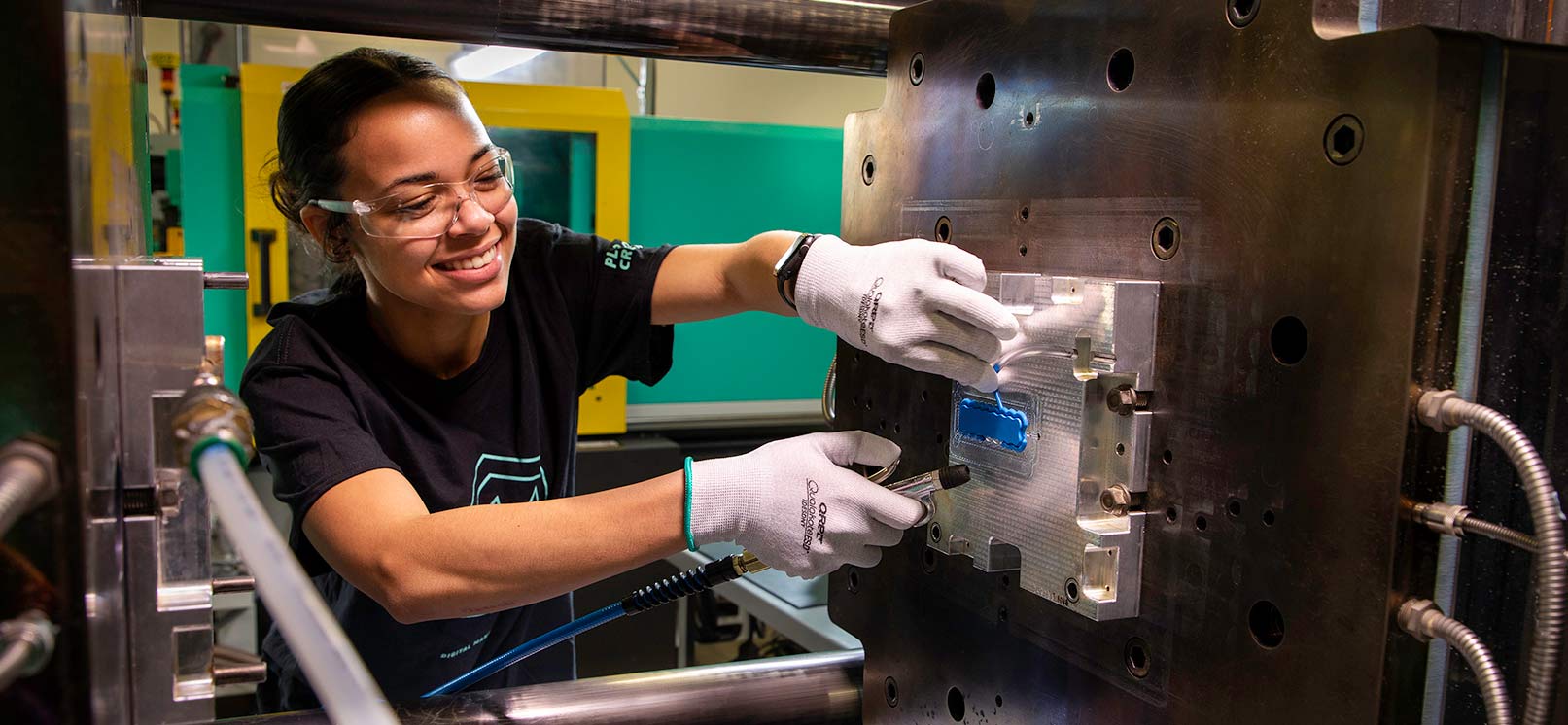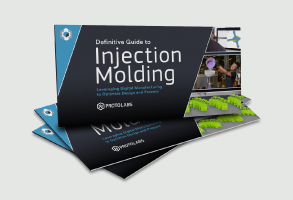Celebrating International Women’s Day by Spotlighting Women in Manufacturing

While interest in and support for celebrating International Women’s Day started as far back as 1910, it wasn’t observed as an official United Nations holiday until 1975. Now, countries all over the world commemorate the March 8 holiday by considering women’s rights throughout history and recognizing the many accomplishments women have contributed to society. Let’s shine a light on the past, present, and future of women in manufacturing and wrap up with a look at Protolabs’ efforts to bring more women into manufacturing.
Looking Back: Influential Women in Manufacturing
Here are just a few of the many influential women of yesteryear whose brilliance in engineering and manufacturing paved the way for millions to come.
1900s
In the early 1900s, Madam C.J. Walker invented her own line of beauty and haircare products that catered to African American women. She later opened her own laboratory to manufacture cosmetics and train sales beauticians, leading to her esteemed title as one of the first American women to become a self-made millionaire.
1940s
When looking back on the history of women in manufacturing, we would be remiss not to highlight WWII’s fictional icon for women in manufacturing, Rosie the Riveter. At the time, 10 million men were inducted into the military leaving a massive void in the workforce and women everywhere stepped up to answer the call to help the war effort. The campaign tagline, “We Can Do It!” encouraged women to enter the workforce in hands-on blue-collar roles in factories, aircraft and ship repair, and construction.

1960s
Polish-American chemist, Stephanie Kwolek created a group of synthetic fibers known for their superior strength (Kevlar being the most widely known/used material) that would be used in boats, airplanes, armor, and a variety of unique applications.
Today and Beyond
Throughout history, women have largely been underrepresented in manufacturing and engineering roles with men encompassing the majority of the industry workforce. However, over the last few decades, this has started to shift. Thanks in part to technological advances and acceptance of women in new roles, manufacturing has opened up to everyone: from engineering and technology services to sales, management, and support positions. At least until...
Nevertheless, She Persisted: Post-Pandemic Progress
Fast forward to the global pandemic. As this 2020 McKinsey Report highlights, the pandemic brought up harsh realities for everyone in the workforce, but particularly women, as many working parents struggled to juggle a full day of work followed by caring for children and housework; sometimes without childcare or in-classroom school.
Companies everywhere—including many of those in the manufacturing industry—have risen to the occasion and stepped up to support women by implementing more flexible work options, benefits, and other programs to ease the crisis for working families. According to a 2022 Thomas and Women in Manufacturing report, the top 5 benefits desired at manufacturing companies include:
- Health insurance
- Flexible schedules
- Educational opportunities
- Remote work
- Performance reviews
This survey data indicates that organizations looking to recruit and retain women in diverse manufacturing roles can do so by offering the above benefits.

Briana Miranda, associate mold process technician, works on a part in our Plymouth, Minn. facility.
Narrowing the Gap: The Future of Females in Manufacturing
That Thomas report revealed that nearly 75% of women in manufacturing recommend a career in the industry. “I enjoy being able to help people solve problems and leave a positive impact on our community through manufacturing,” said Brittany Vacha, Protolabs support team lead in mill maintenance and repair.
One way to further reduce the gender gap in manufacturing is to encourage girls at a young age to get involved in STEM (science, technology, engineering, mathematics) educational programs. In recent years, there’s been an uptick of global organizations like Girls In STEM, STEM Like a Girl, and Black Girls Code, all dedicated to support and encourage a love of STEM in young girls from the get-go.
Progress has been made in narrowing the gender gap in manufacturing, but there’s still room for improvement.
By the Numbers
- From 2010 until the pandemic in 2020, women working in manufacturing roles increased in every working age category
- In 2021, these numbers started inching back up to pre-COVID levels
- Women make up about 47% of the American workforce but only 30% of manufacturing roles are held by women
Empowering Women at Protolabs
At Protolabs, diversity, equity, and inclusion matters. We’re excited to offer a Women in Manufacturing (WiM) employee resource group. WiM is a global trade association dedicated to providing support to women who work in manufacturing in every job function; from production to the C-Suite.
“Protolabs supports women by focusing on career advancement and putting education plans into action,” said Bernadine Henderson, Protolabs Director of Global Procurement. “It’s part of our culture.”
She offers some sage advice for women who want to explore a career in manufacturing: “My advice is always, just try it. Don’t be afraid of failing or not liking it, be bold and brave. There are so many different functions within manufacturing, and all require a variety of skills. It’s a matter of finding the right space. I foresee the next generation continuing to move forward and growing. I see the need to acknowledge the differences we have as women and the unique value we bring into manufacturing.”

If you have any issues getting your guide, click here to download.







